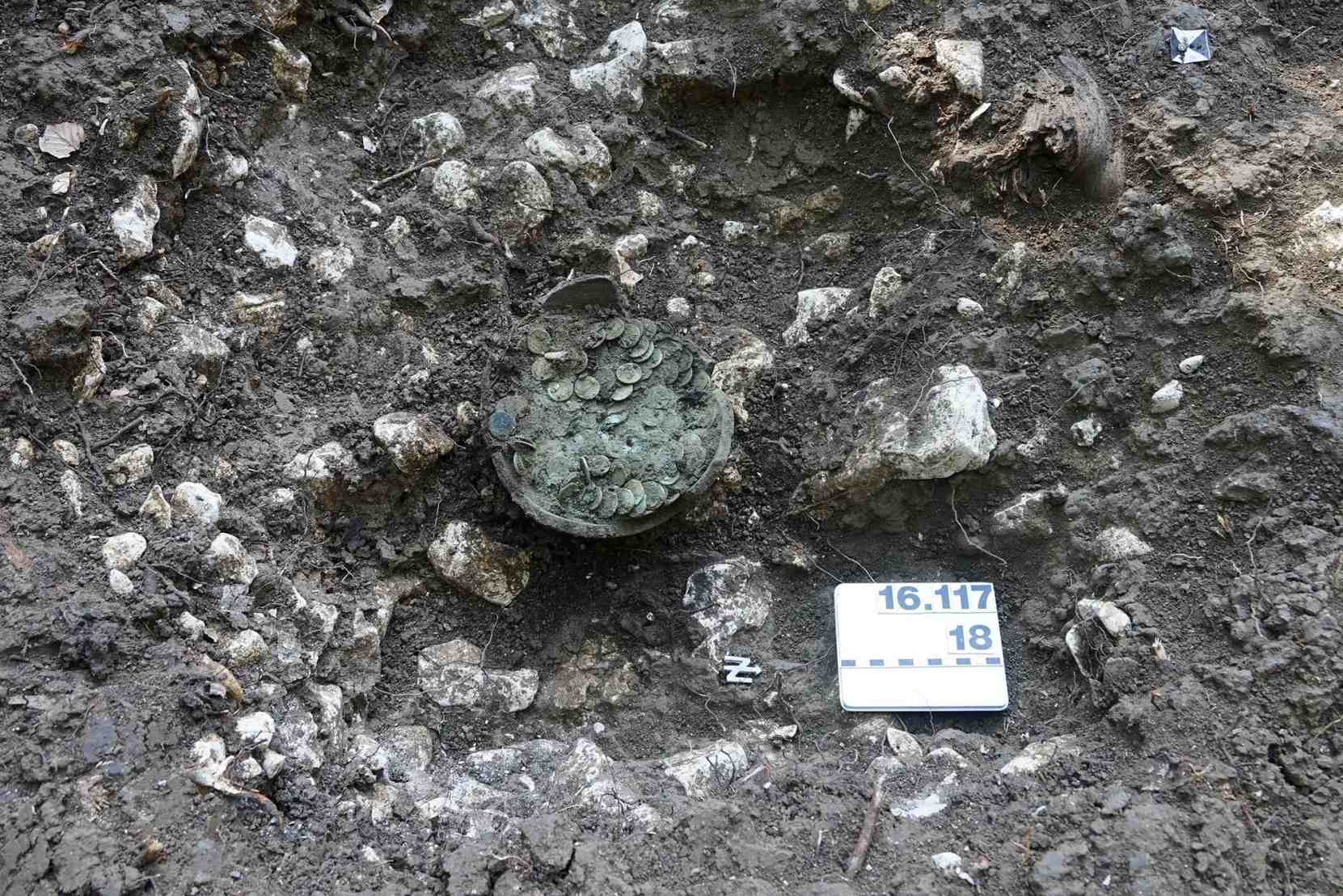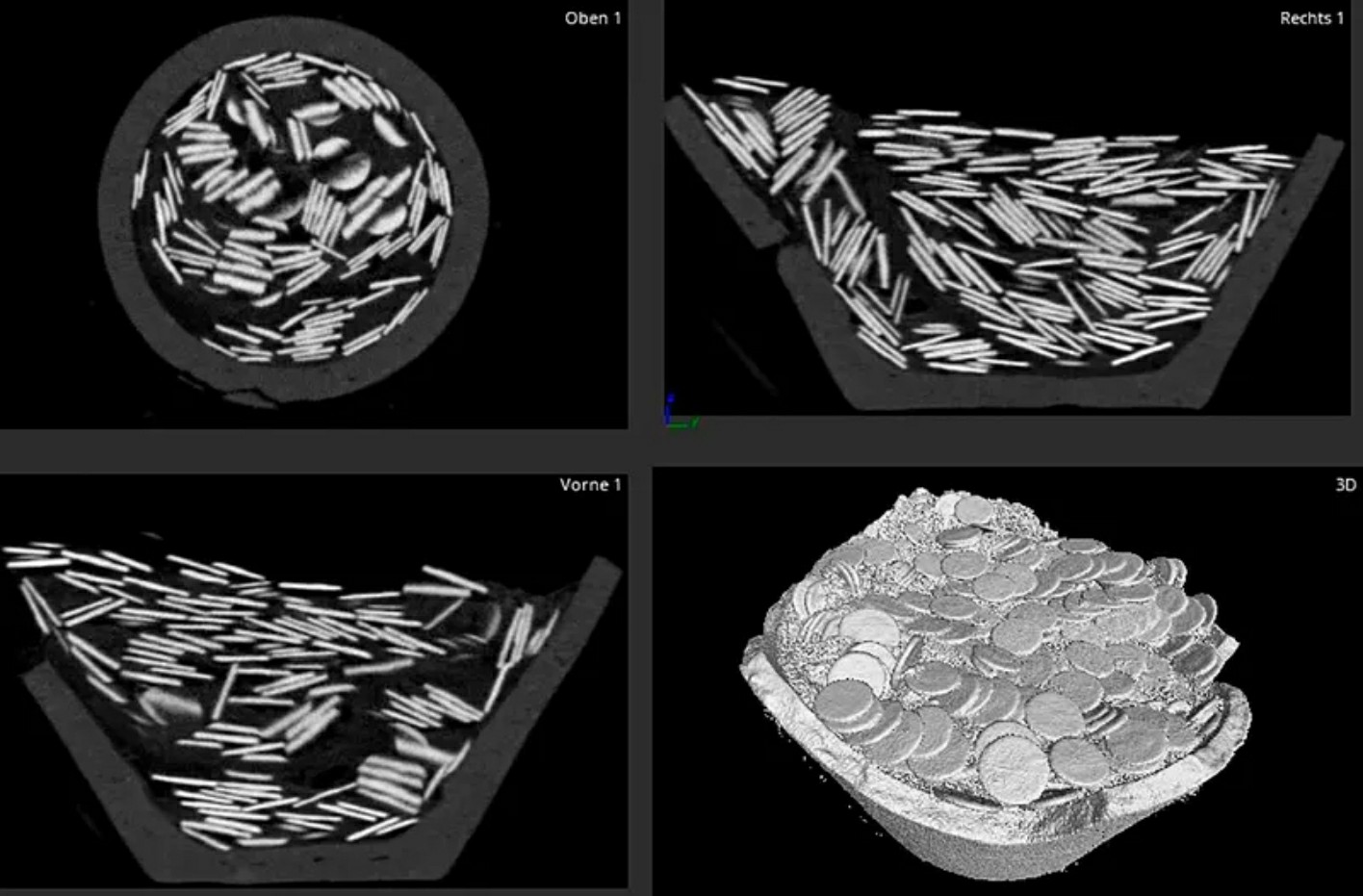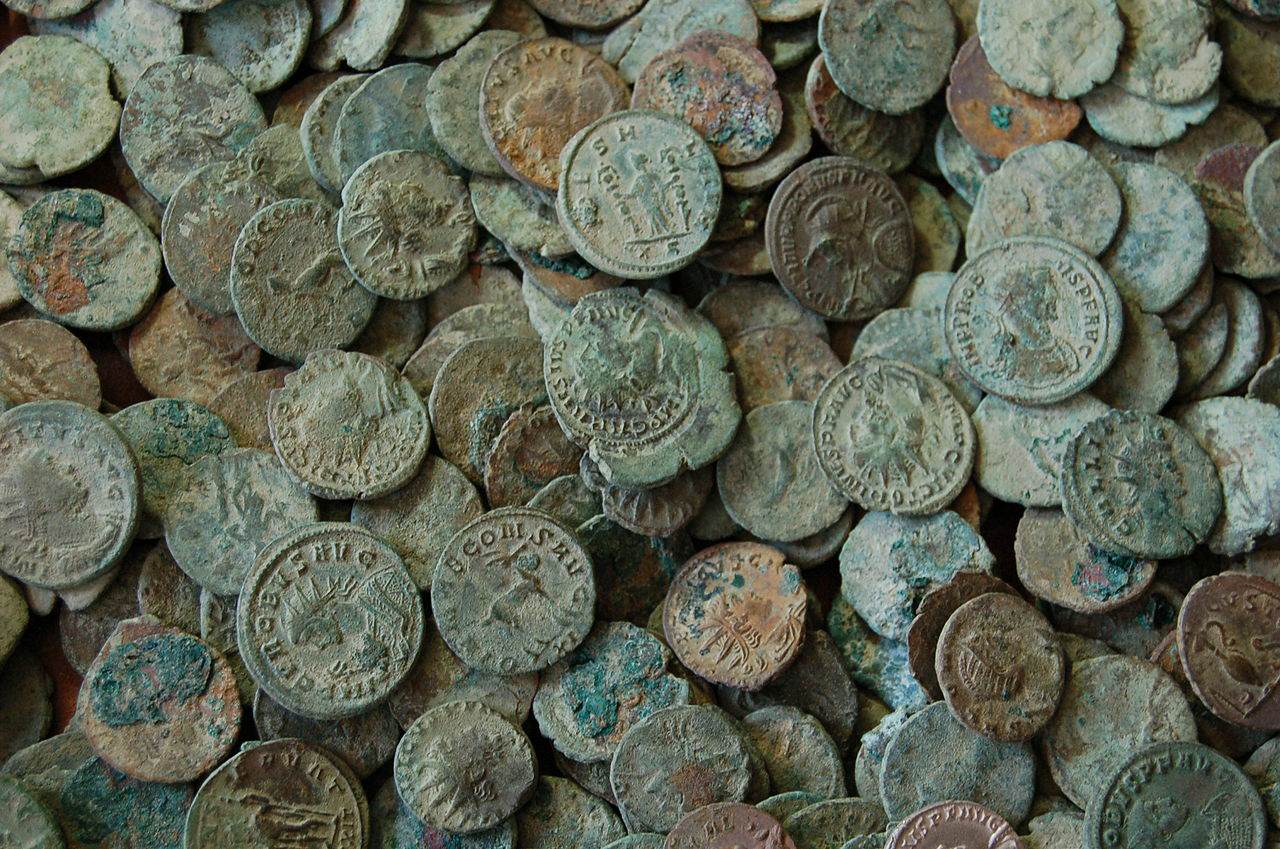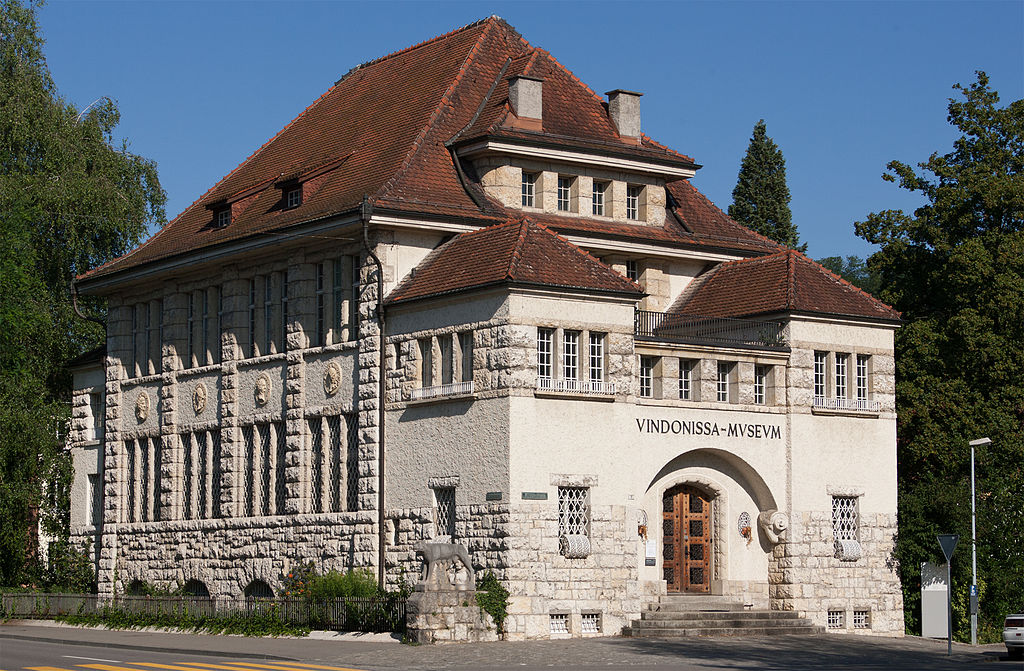One of the most remarkable archaeological finds has been the discovery of a massive Roman coin collection in a Swiss vineyard. A farmer unearthed the old coins a few months ago in Ueken, a rural town in northeastern Switzerland.

He discovered them by chance while examining his cherry trees. He then called local archaeological specialists, who verified the presence of almost 4,000 copper and silver Roman coins.
Large troves of Roman coins are often discovered in Britain. In 2009, the Frome Hoard, a collection of approximately 60,000 rusty coins, was discovered in a field in Somerset.
This Swiss collection is also one of the largest ever discovered outside of the UK, making it extremely valuable. The discovery also comes at a time when there is a renewed interest in Rome and Roman history across the world, as indicated by the October discovery of an intact tomb at Pompeii’s archaeological site.

Archaeologists say that Roman coins are frequently discovered buried in huge amounts, maybe as a ceremonial gift to the Roman gods. The Frome Hoard, on the other hand, was abandoned and mostly forgotten until recently. Despite the fact that the majority of the Swiss coins have been discovered, no precise purpose has yet been postulated.
The excavators revealed that between 270 and 294 AD, their owner buried them at regular intervals and never came to retrieve them. However, the coins were taken out of circulation soon after they were introduced, but they were believed to be worth between one and two years’ salary at the time.

The coins, which were composed of bronze and silver, have been extraordinarily well preserved in the soil. “The owner must have deliberately chosen these coins to hoard them,” Swiss coin expert Hugo Doppler explained to the Swiss Broadcasting Corporation. “Their silver content would have guaranteed specific value conservation in a time of economic uncertainty.” Georg Matter, a Swiss archaeologist, was overjoyed by the find.
“As an archaeologist, one hardly experiences something like this more than once in one’s career,” he told Spiegel Online. However, as wonderful as the finding is, the Swiss farmer who discovered the coins will not be able to retain his prize.

“He will likely get a [finder’s] fee,” he told Agence France-Presse, “but the objects found belong to the public, by Swiss law.” The coins will be on exhibit in the Vindonissa de Brugg Museum in Aargau, Switzerland, which specializes in Roman history.



